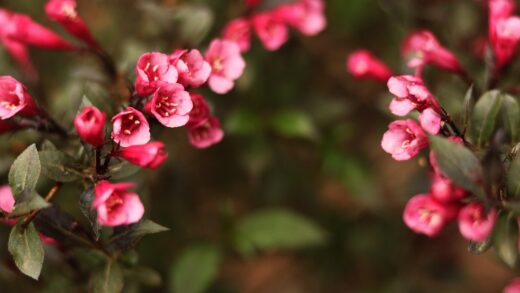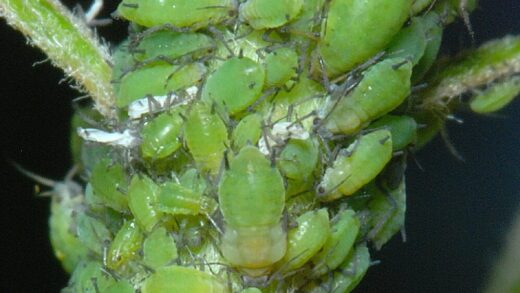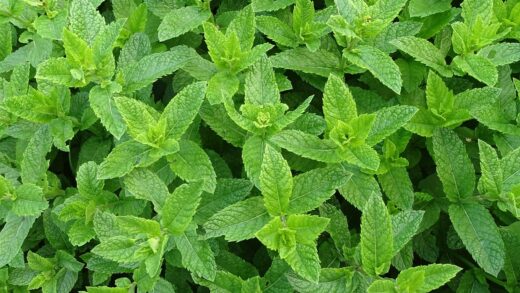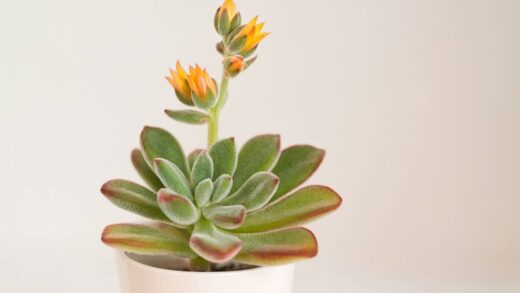The successful establishment of a silk acacia begins long before the tree is placed in the ground; it starts with meticulous planning and preparation. Choosing the right specimen and the perfect location are foundational steps that will dictate the tree’s future health and ornamental value. A young, healthy tree from a reputable nursery, with a well-developed root system and no signs of disease or stress, provides the best chance for success. This initial phase of planting is a critical investment in the tree’s long life, ensuring it has everything it needs to develop into a strong, beautiful, and resilient garden centerpiece.
The process of planting a silk acacia is straightforward but requires attention to detail to avoid common pitfalls that can hinder its establishment. The primary goal is to create a welcoming environment for the roots, allowing them to expand quickly into the surrounding soil. This involves preparing the planting hole correctly and handling the tree with care to minimize transplant shock. A properly planted tree will exhibit vigorous new growth in its first season, a clear sign that it is successfully adapting to its new home. Conversely, a poorly planted tree may struggle for years, showing stunted growth and a general lack of vitality.
Propagation offers a rewarding way to create new silk acacia trees, either from seeds or from cuttings. This allows gardeners to multiply a particularly beautiful specimen or to share this wonderful tree with others. Each method has its own set of procedures and challenges, but both can be highly successful with the right knowledge and technique. Propagating a plant provides a deeper connection to the gardening process, offering the satisfaction of nurturing a new life from its very beginning. It is a testament to the remarkable reproductive capabilities of the plant kingdom.
Ultimately, whether one is planting a nursery-grown tree or propagating a new one, the objective is the same: to foster a new life that will grow to its full potential. The subsequent care provided in the first few weeks and months is just as important as the initial planting or propagation effort. This early care, focused primarily on water management and protection from environmental stress, bridges the gap from a vulnerable young plant to an established, self-sufficient tree. Careful execution of these steps will ensure the silk acacia becomes a cherished feature of the landscape.
Selecting the ideal planting location
The selection of an appropriate site is the most influential factor in the long-term success of a silk acacia. This tree demands a position in full sun, which means it requires at least six to eight hours of direct, unimpeded sunlight each day. This exposure is not merely a preference but a necessity for triggering the hormonal processes that lead to abundant flowering and for fostering dense, healthy foliage. A location that receives ample sunlight throughout the day, particularly during the afternoon, will result in a spectacularly floriferous and structurally sound tree. Locations with partial shade should be avoided as they will inevitably lead to disappointment with sparse blooms and weak, elongated growth.
More articles on this topic
Equally important is providing the tree with adequate space to reach its mature size without interference. A mature silk acacia develops a very broad, vase-shaped or umbrella-like canopy that can easily extend over ten meters in width. It is crucial to plant it well away from buildings, overhead utility lines, and property boundaries to prevent future conflicts. Consideration must also be given to what will be underneath the canopy; the tree drops a significant amount of flower and leaf litter, which can be a nuisance in pools, on patios, or over meticulously maintained perennial beds. Planning for its ultimate size at the time of planting prevents the need for difficult and potentially damaging pruning later on.
Soil characteristics at the chosen site must align with the tree’s needs, with drainage being the paramount concern. The silk acacia is intolerant of ‘wet feet’ and will quickly succumb to root rot in soil that remains waterlogged. The ideal soil is a light, well-drained loam, but it can adapt to sandy or clay soils provided the drainage is adequate. Before finalizing the location, it is a wise practice to perform a percolation test by digging a hole and observing how quickly water drains away. If the water stands for more than a few hours, the location is unsuitable unless significant soil amendments are made to improve its structure and drainage capacity.
Finally, the microclimate of the planting site should be considered, especially in regions at the colder end of the tree’s hardiness range. Planting it in a location that offers some protection from harsh, drying winter winds can make a significant difference in its survival and health. A spot on the south or west side of a building, for example, can create a warmer microclimate that helps protect the tree from extreme cold. This thoughtful consideration of sun, space, soil, and shelter will provide the foundation for a thriving silk acacia.
The step-by-step planting process
Once the ideal location has been selected, the next step is to prepare the planting hole. A common mistake is to dig a hole that is too deep and not wide enough. The hole should be dug to a depth that is no deeper than the root ball of the tree, but it should be at least two to three times as wide. This wide, shallow hole provides loosened soil for the new roots to easily penetrate and expand horizontally, which is how most tree roots grow. Digging too deep can cause the tree to settle over time, leading to the root flare being buried, which can cause girdling roots and trunk rot.
More articles on this topic
Before placing the tree in the hole, it is essential to properly prepare the root ball. If the tree is in a container, carefully slide it out, inspecting the roots. If the roots are tightly circling the bottom of the pot (a condition known as being root-bound), it is crucial to gently tease them apart or make several vertical cuts through the outer layer of roots with a sharp knife. This encourages the roots to grow outwards into the new soil rather than continuing to circle and strangle the tree. For balled-and-burlapped trees, remove any wire cages and cut away all twine and as much of the burlap as possible after the tree is placed in the hole.
Position the tree in the center of the prepared hole, making sure it is standing straight from all angles. The top of the root ball should be level with or slightly above the surrounding ground level. Planting a tree too deep is one of the most frequent causes of failure. Once the tree is correctly positioned, begin backfilling the hole with the native soil that was originally removed. It is generally not recommended to heavily amend the backfill soil with compost or other rich materials, as this can create a ‘flowerpot effect’ where the roots are reluctant to grow beyond the enriched area into the poorer native soil.
After the hole is completely backfilled, gently tamp the soil down to eliminate any large air pockets. Create a shallow basin or ‘berm’ of soil around the outer edge of the planting hole to help retain water. The final and most critical step is to water the newly planted tree thoroughly and deeply. Apply water slowly to allow it to soak in and settle the soil around the roots. This initial watering is vital for hydrating the tree and eliminating any remaining air pockets, ensuring good root-to-soil contact.
Propagation from seed
Propagating the silk acacia from seed is an economical and deeply rewarding process that begins with the collection of viable seeds. The seeds are produced in flat, bean-like pods that mature on the tree in late summer and autumn, turning from green to a dry, papery brown. Once the pods are fully dry, they can be harvested directly from the tree. The pods are then split open to extract the small, hard, oval-shaped seeds. For best results, use seeds from the most recent growing season, as their viability decreases over time.
The seeds of the silk acacia have an extremely hard, impermeable seed coat that prevents water from entering and initiating germination. To overcome this, a process called scarification is necessary. This can be achieved mechanically by gently nicking the seed coat with a file or a piece of sandpaper, being careful not to damage the inner embryo. A more common and often easier method is hot water scarification. The seeds are placed in a cup, and hot (not boiling) water is poured over them. They are then left to soak for 24 hours, during which time the viable seeds will swell to several times their original size.
After scarification and soaking, the swollen seeds are ready for sowing. They should be planted in a well-draining seed-starting mix, placing them about one centimeter deep. The pots or trays should be kept in a warm, bright location, maintaining a consistent temperature of around 20-24 degrees Celsius to encourage germination. The soil should be kept consistently moist but not waterlogged, as excessive moisture can cause the seeds to rot. Covering the container with a clear plastic lid or bag can help maintain the necessary humidity.
Germination can be quite rapid, often occurring within one to three weeks after sowing. Once the seedlings have emerged and developed their first set of true leaves, the plastic cover can be removed to improve air circulation. The seedlings should continue to be grown in a bright location, protected from strong, direct sunlight until they are more established. They can be transplanted into individual pots once they are large enough to handle. The young trees should then be gradually acclimatized to outdoor conditions before being planted in their final garden location.
Vegetative propagation through cuttings
Vegetative propagation, specifically through cuttings, is an excellent method for creating a new silk acacia that is a genetic clone of the parent plant. This is particularly useful for reproducing a tree with desirable characteristics, such as exceptional flower color or form. The most common type of cutting used for this purpose is a semi-hardwood cutting, taken in mid to late summer when the current season’s growth has started to mature and become slightly woody but is still flexible. These cuttings tend to root more reliably than softwood cuttings taken earlier in the season.
To take a cutting, select a healthy, vigorous branch from the parent tree. Using a sharp, sterilized pair of pruning shears, cut a section that is about 15-20 centimeters in length. The cut at the base of the cutting should be made just below a leaf node (the point where a leaf is attached to the stem). Remove the leaves from the lower half of the cutting to reduce moisture loss through transpiration, leaving only two or three sets of leaves at the top. It can also be beneficial to wound the base of the cutting by lightly scraping off a thin strip of bark on two sides, which can encourage root formation.
To increase the chances of successful rooting, the prepared base of the cutting should be dipped into a rooting hormone powder or gel. This product contains auxins that stimulate adventitious root development. Gently tap off any excess powder before planting the cutting. The cutting should be inserted into a pot filled with a sterile, well-draining rooting medium, such as a mix of perlite and peat moss or coarse sand. The cutting should be pushed into the medium deep enough so that it stands upright, typically about one-third of its length.
The key to successful rooting is to provide a warm and humid environment. The pot should be placed in a location with bright, indirect light, and the medium should be kept consistently moist. To maintain high humidity, the pot can be covered with a clear plastic bag or placed in a propagator. Rooting can take several weeks to a few months. A gentle tug on the cutting can be used to check for root formation; if it resists, roots have likely formed. Once a healthy root system has developed, the new plant can be gradually acclimatized to lower humidity before being potted up.
















